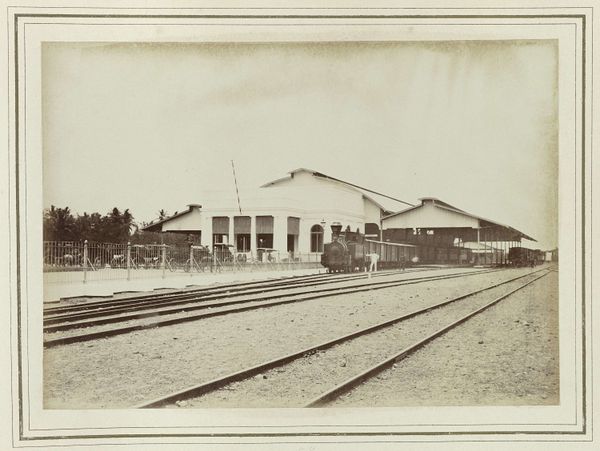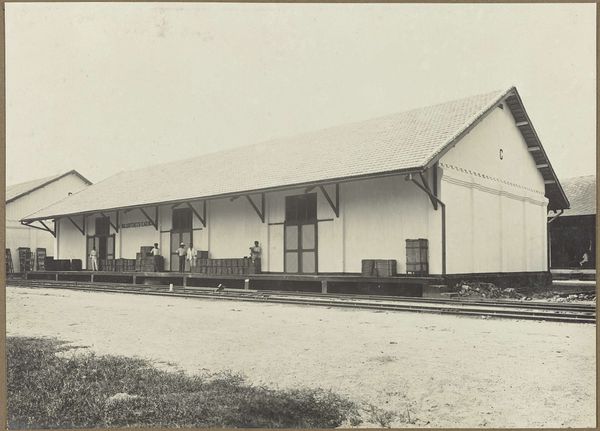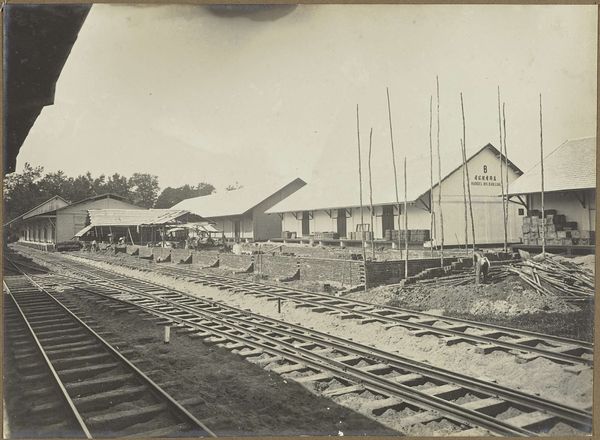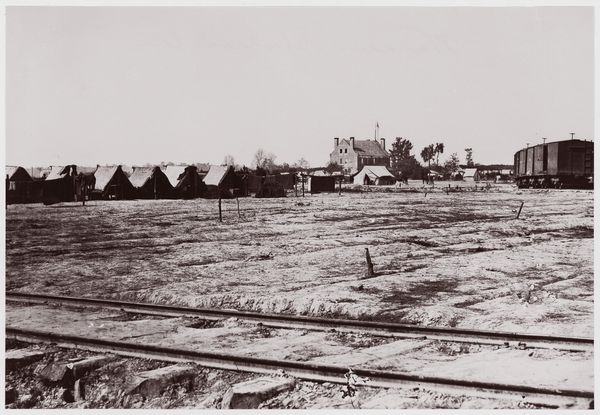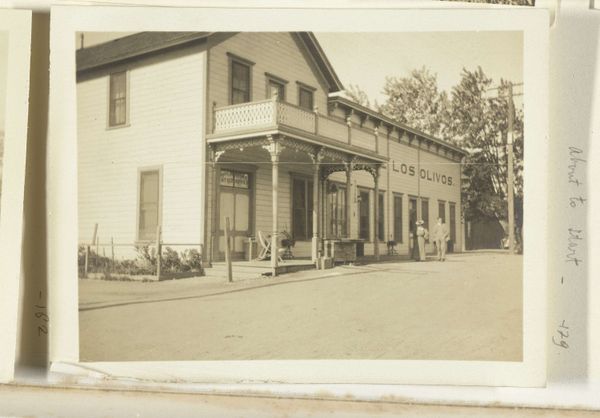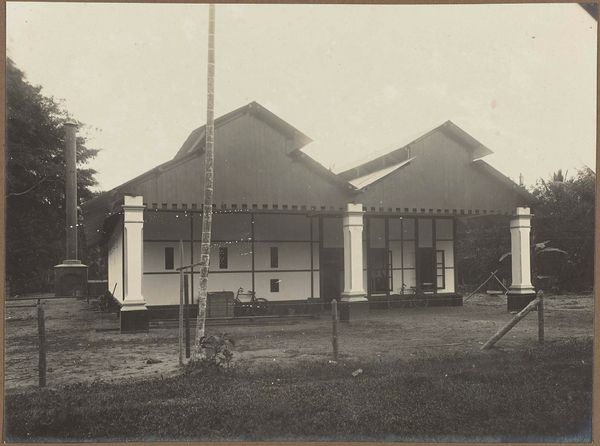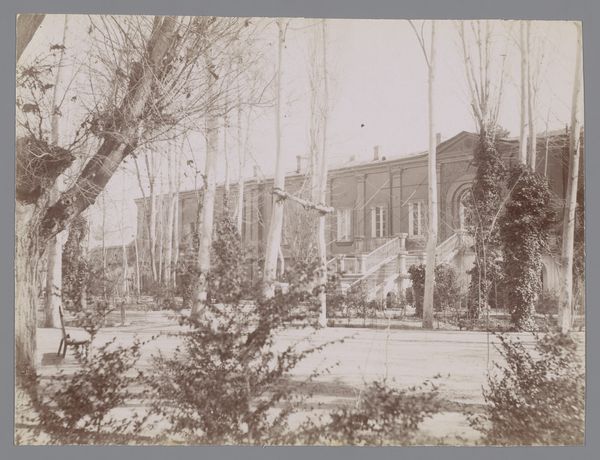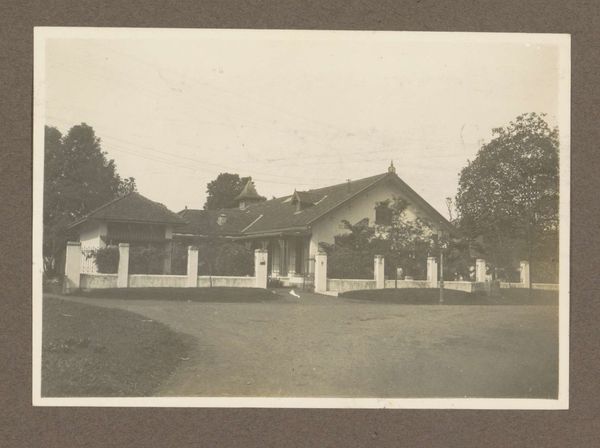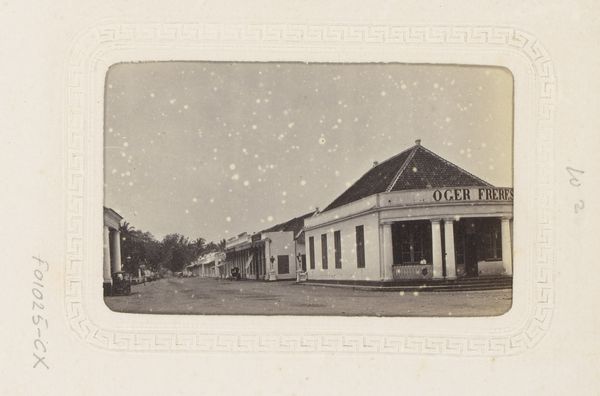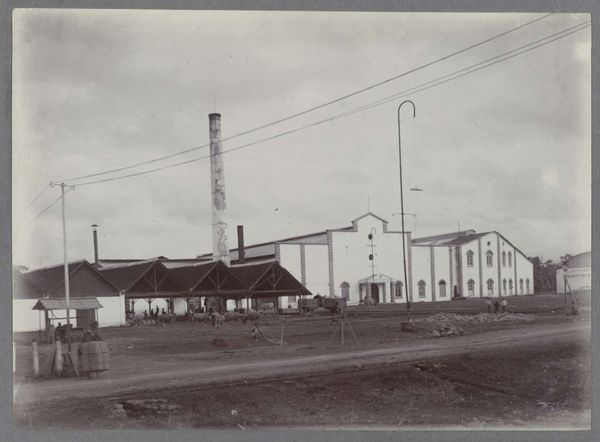
Sociëteit Tersana op de suikeronderneming Nieuw Tersana, Cheribon, voormalig Nederlands-Indië c. 1890 - 1911
0:00
0:00
photography
#
black and white photography
#
dutch-golden-age
#
landscape
#
photography
#
historical photography
#
monochrome photography
#
cityscape
Dimensions: height 172 mm, width 215 mm
Copyright: Rijks Museum: Open Domain
Curator: This photograph, taken sometime between 1890 and 1911 by Onnes Kurkdjian, presents the "Sociëteit Tersana" on the sugar plantation Nieuw Tersana, in what was then known as the Dutch East Indies. Editor: My first thought? An eerie calm. The black and white palette makes it feel both distant and immediate. Those lonely train tracks... They give the picture an unnerving stillness, like a scene paused right before a storm, or right after a terrible thing has occurred. Curator: It's fascinating that you picked up on that stillness, as the scene, at a surface level, appears almost idyllic. But beneath this tranquility lies the deeply problematic history of colonial exploitation. Sugar plantations in the Dutch East Indies relied heavily on exploited labor. The "Sociëteit", likely a social club for the plantation's European managers, becomes a symbol of colonial power dynamics. Editor: I get that. It's that chimney, pumping smoke into the seemingly pristine sky, that clues me into the artifice here. Like, beneath the clean lines and the ordered façade, there's a dirty engine churning. This Sociëteit looks more like a well-staged film set built atop an oppressive labor camp. I also can’t help but feel a pang of guilt and sadness about all the hands that made the sugar. Curator: The composition reinforces this reading. The building is centered and imposing, while any local presence is almost invisible and certainly peripheral. The carefully framed landscaping emphasizes control and order, very typical of colonial administrative imagery. The trees on either side, are sentinels. Editor: It feels staged, for sure. The rigid trees and precise tracks amplify the artificial order that can often blind us to ethical decay and make you complicit without noticing. What’s wild is I can’t tell whether I’m observing a picture of an event from more than 100 years ago, or seeing a mirror into current economic exploitations. It’s timeless in a sickening sort of way. Curator: Precisely, this image prompts us to consider the lasting impact of colonial structures and how these legacies continue to shape global power imbalances. It’s not just a historical document; it's a stark reminder of how wealth was built on injustice. Editor: Yeah, I'm going to walk away and give this piece another long stare… then do a search and figure out who profited the most off that “Societeit”. And I need a piece of chocolate, for penance, you know. Thanks for pulling this photograph out; it feels very necessary.
Comments
No comments
Be the first to comment and join the conversation on the ultimate creative platform.
